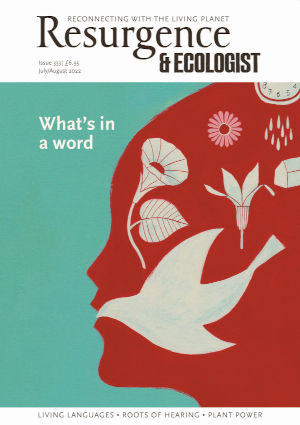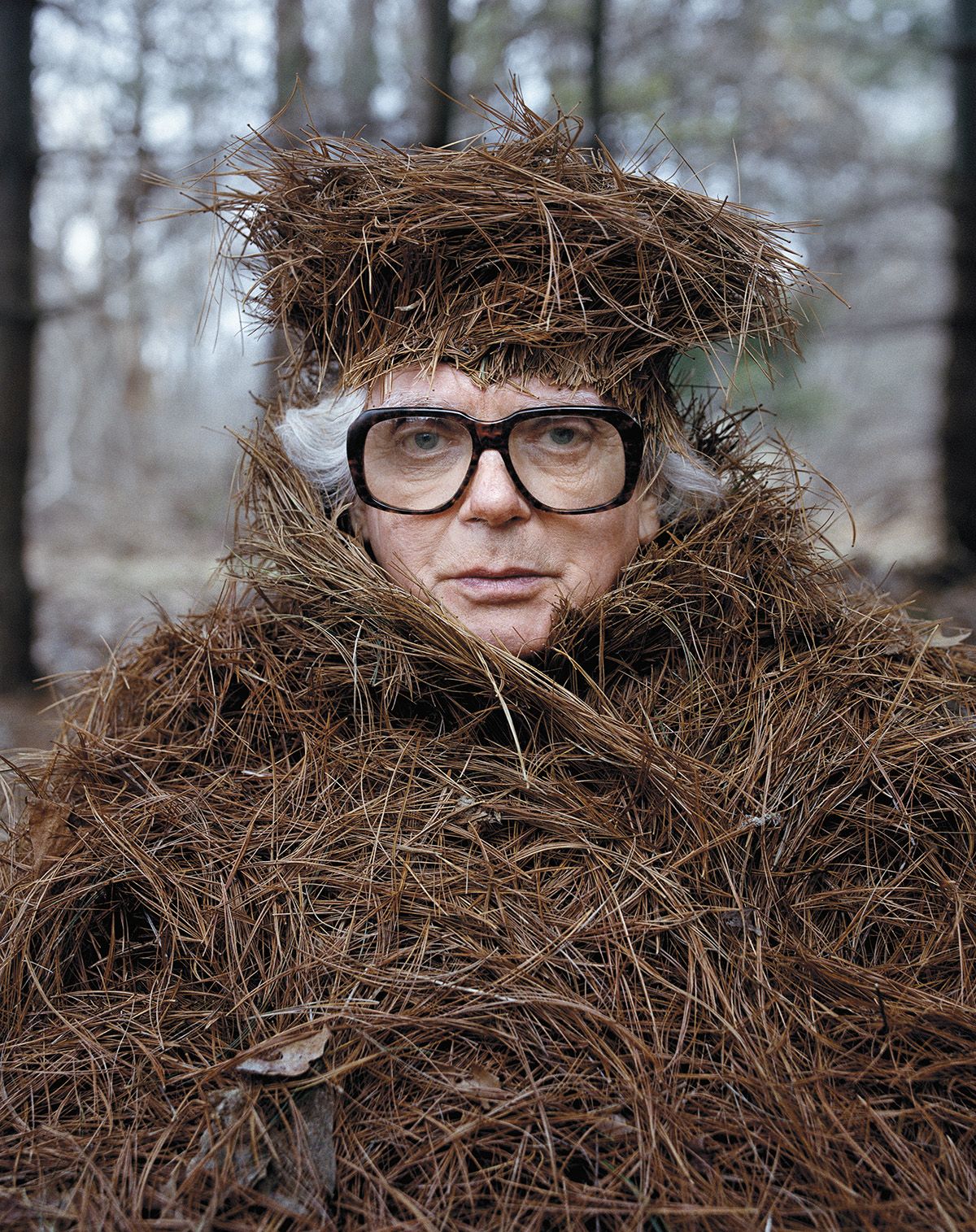In a patch of pine trees in Forest Park, on the outskirts of New York, a man sits on the soft ground, his distinctive oversized spectacles and wisps of thick white hair peeking out from a pile of pine needles. He is Bob, one of the many people who have taken part in ‘Eyes as Big as Plates’, a project run by Riitta Ikonen and Karoline Hjorth aimed at capturing modern humans’ relationship with the natural world. The name is a nod to folktales, and references the project’s open-eyed approach. Their quirky and beautiful compositions frame people and Nature in a new way, gently probing conceptions of how we interact with the non-human.
“Bob told us that he had spent a number of years perfecting his style, so we promised to stay true to that,” Ikonen tells me via video call from New York. She produces a photo of him from behind her laptop, stylish and bespectacled, but free from pine needles. “He is my best friend on the whole planet. There are people we have deep deep friendship with. It’s a big family now.”
The project began in 2011 when the two women hit the streets looking for strangers to invite for photo shoots exploring how natural phenomena were explained through human form. In one photo, 91-year-old Agnes, ‘Norway’s oldest parachuting granny’, stands on a rock by the sea, the dark branches intertwined on her head reaching out into the air. The portrait was a tribute to the north wind often featured in Nordic folk tales.
“The top people we wanted to meet were older people,” Ikonen says. “We figured that these older people would know most about folk tales, but we were very quickly pooh-poohed. They said, ‘This is children’s stories. This is nonsense, what you are talking about. We don’t have time to turn rocks and wonder what’s underneath.’” However, the two women were not put off. “[We] started wondering what’s happening with people’s imagination,” Hjorth said in a TED Talk. “Can our relationship to Nature really be explained so pragmatically, so entirely boringly, so that a rock is just a good old straightforward rock, and a lake is just a basic wet place, entirely separate from us? Can our surroundings really be explained to such a dull degree of rationality?”
Since the project’s beginning in 2011, the pair have published two books and travelled to 15 countries. In each image, the rapport between photographed and photographer is clear to see. “It is a collaboration, so we never call the people we work with our models,” Hjorth tells me, joining the video call from a café in Norway. “It’s a methodology that always starts with a conversation, and it works better if we don’t know each other from before. Serendipity seems to play an important part there. From the conversation, it could go in many directions, but we always let the person we meet direct where we go, what they share about themselves and what’s the focus for them. So it’s supposed to be fun for everybody.”
The project is more than just photography, though. It is also sound recordings, stories behind how the image was created, and the thinking behind it. “It’s a very unmystified process,” Ikonen says.
As mobile phones have allowed us to snap images of our surroundings wherever we are, scenes of natural wonder become something to take home with us, to extract and covet for social status via sites like Instagram. In this way photographs of beautiful places can lose their wonder. ‘Eyes as Big as Plates’ tells a different story. The way people are incorp-orated into the landscape makes the viewer feel that we are witnesses to an enveloping of human and Nature, a story of connection. Instead of feeling like we are stealing a part of it, we are invited into it.
Connecting with Nature in this way can be powerful. The next stage of the journey for ‘Eyes as Big as Plates’ is a trip to Norway to visit some eider ducks and discuss with ornithologists and climate scientists how the birds are being affected by global heating. “We have this visual language that seems to be quite accessible to people across the world across language barriers,” Ikonen said. “If we can get people to go, ‘Great! Who is that person who is covered in little rocks? What are they up to?’ and if we can get people to learn about something, they also have a chance to care about it and take action for change.”
An exhibition of ‘Eyes as Big as Plates’ is part of the show Our Time on Earth at the Barbican Centre, London, until 29 August 2022. The book Eyes as Big as Plates 2 is published by arnoldsche.com . www.eyesasbigasplates.com







